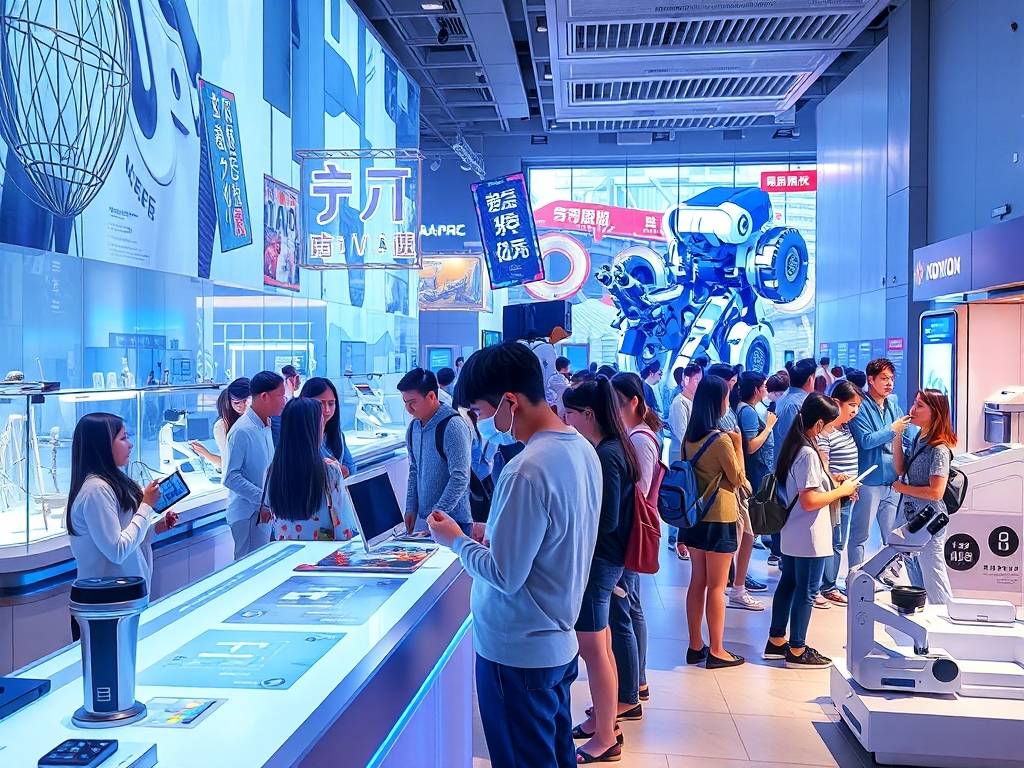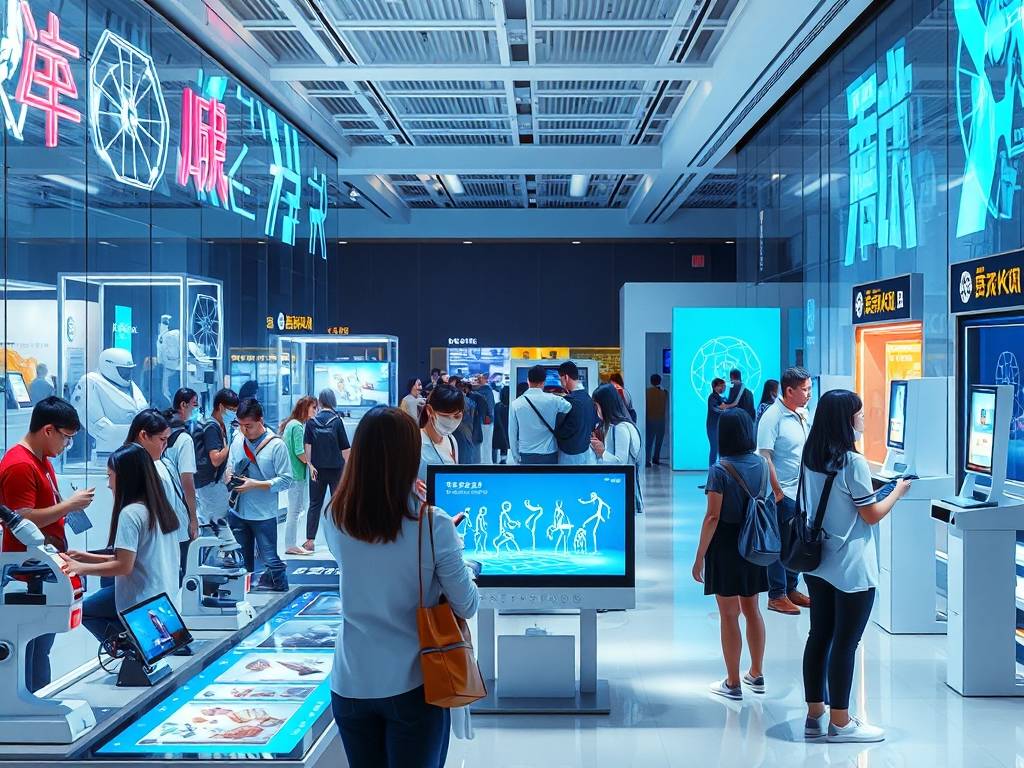Japan Travel
Tokyo’s Science Museum Gear Reviews: Read About Exhibit Tools
Navigating Innovation: A Deep Dive into Exhibit Tools at Tokyo's Premier Science Museums
Ever stepped into a science museum and felt a thrill of excitement, mixed with a hint of confusion? You see a fascinating contraption, a glowing screen, or a complex model, but you're not quite sure how to engage with it to get the most out of the experience. You're not alone. The heart of any modern science museum lies in its interactive exhibits, the very tools that transform abstract concepts into tangible, unforgettable learning. In a city as technologically advanced as Tokyo, these exhibit tools are not just add-ons; they are the main event.

This comprehensive guide is your personal curator for the incredible world of exhibit tools found across Tokyo's top science museums. We'll go beyond the surface, offering detailed reviews and insights to ensure you, whether a curious tourist, a family with young scientists, or a dedicated enthusiast, can fully appreciate the engineering and educational brilliance on display. We're here to answer all your questions: What are these tools like to use? Which are best for different ages? How do they make learning so effortless and fun? Let's gear up and explore.

The Philosophy of Hands-On Learning in Tokyo
Before we dive into specific tools, it's essential to understand the "why." Japanese science museums, particularly in Tokyo, are built on a foundation of taiken (体験) – the concept of direct experience. The goal isn't just to show you science but to let you live it. This philosophy is brought to life through meticulously designed exhibit tools that cater to diverse learning styles—kinesthetic, visual, and auditory. The best museum technology reviews often highlight this seamless blend of education and entertainment, creating what is known as an "edutainment" experience that feels less like a lesson and more like an adventure.
A Curator's Tour of Must-Experience Exhibit Tools
We'll focus on some standout exhibit tools from iconic institutions like the National Museum of Emerging Science and Innovation (Miraikan) and the National Museum of Nature and Science (Kagaku Gijutsukan) in Ueno.
1. The Geo-Cosmos at Miraikan: A Globe Like No Other
- Tool Overview: Often the first image that comes to mind when thinking of Miraikan, the Geo-Cosmos is a stunning, six-meter spherical OLED display suspended in the main atrium. It's one of the most iconic interactive museum displays in the world.
- User Experience Review: The sheer scale is breathtaking. It doesn't just show a static image of Earth; it displays near-real-time global data sets. You can watch weather patterns swirl, ocean currents flow, and the planet's "night lights" illuminate as darkness falls across the continents. The user experience for science exhibits here is passive yet profoundly impactful. You don't touch the globe itself; you stand in awe, absorbing the dynamic beauty of our planet. It’s a powerful reminder of Earth's interconnected systems.
- Best For: All ages. It captivates young children with its bright colors and familiar planet shape, while adults and students can appreciate the complex data visualization. It's a perfect tool for sparking conversations about climate change, geography, and global connectivity.
- Pro Tip: Check the museum's schedule for scheduled "visualization shows" where the globe displays specific thematic data with accompanying narration, turning it into a mini-planetarium show.
2. ASIMO and the Humanoid Robotics Zone
- Tool Overview: While ASIMO's public performances have concluded, the legacy of Honda's famous robot lives on in the robust robotics exhibits at Miraikan. This zone is a living lab of interactive museum displays featuring various robots designed for communication, assistance, and exploration.
- User Experience Review: This isn't about watching robots behind glass. Many exhibits allow for direct interaction. You might see a robot playing a game with a child, another demonstrating delicate motor skills, or even a swarm of small robots coordinating their movements. The hands-on science tools here are the robots themselves. The experience is designed to demystify robotics, answering the core question: "How do they work?" Through simple, guided interactions, you learn about sensors, programming, and mechanical engineering in an intuitive way.
- Best For: Tech enthusiasts, engineering students, and families with older children. The concepts can be advanced, but the visual spectacle of robots in action is universally engaging.
- Long-Tail Keyword in Action: For anyone searching for a "family-friendly guide to Tokyo Miraikan robotics," this exhibit is the cornerstone. It provides a balanced mix of spectacle and substance.
3. The Mystery of Life and Future Dioramas
- Tool Overview: Moving to the National Museum of Nature and Science in Ueno, we find a different but equally compelling type of exhibit tool: the interactive diorama. These are not your traditional stuffed-animals-in-a-case scenes. They are enhanced with digital overlays and touch-screen interfaces.
- User Experience Review: Imagine looking at a detailed diorama of a prehistoric jungle. By using a provided tablet or touching a screen, you can "scan" the diorama. Suddenly, labels pop up, animations show how creatures moved, and you can hear reconstructed sounds. This is a prime example of enhancing museum visits with technology. It bridges the gap between the static, classic museum model and the dynamic digital world, enriching the context without overwhelming the original artifact.
- Best For: Learners who are visually oriented and anyone interested in biology, evolution, and ecology. It's particularly good for keeping children engaged with historical or natural subjects that might otherwise seem static.
4. The Physics and Engineering Experiment Corners
- Tool Overview: Scattered throughout both museums, especially in Ueno, are stations dedicated to fundamental principles of physics. These are the quintessential hands-on science tools: levers, pulleys, optical illusions, magnetic resonance demonstrations, and fluid dynamics tables.
- User Experience Review: This is where you get to play with science. You can crank a wheel to generate electricity and light a bulb, create vortices in a water tank, or try to beat a reaction-time test. The user experience for science exhibits here is direct and immediate. Cause and effect are clear and instantaneous. These tools are brilliantly simple, yet they perfectly illustrate complex laws of nature. They are the workhorses of science education, and their durability and design are a testament to their effectiveness.
- Best For: Hands-on learners, children with energy to burn, and anyone who wants a concrete understanding of basic physics principles. It's the perfect answer to the query for "best interactive exhibits for kids Tokyo."
Maximizing Your Visit: A Guide to the Tools
Knowing what tools are available is half the battle. Knowing how to use them is the other. Here’s how to ensure you get the most out of these incredible resources:
- Engage, Don't Just Press: With interactive museum displays, the goal is understanding, not just activation. Read the placards (most have English translations). Ask yourself why something is happening. What principle is being demonstrated?
- Look for the Staff: The museum staff members are expert guides. Don't hesitate to ask them questions. They often know hidden features of an exhibit or can provide a deeper explanation that transforms a fun activity into a genuine "aha!" moment.
- Take Your Time: The biggest mistake is to rush through. Spend at least 10-15 minutes at a major exhibit tool. Observe others using it. See what they discover. The Geo-Cosmos, for instance, reveals new patterns the longer you look.
- Connect the Dots: Museums are designed with a flow. Notice how exhibits on robotics might be near exhibits on human anatomy, highlighting the field of biomimicry. This holistic view is a key part of enhancing museum visits with technology and thoughtful design.
Tokyo's science museums offer a breathtaking array of exhibit tools that cater to every curiosity. From the grand, data-driven spectacle of the Geo-Cosmos to the simple, tangible joy of turning a pulley, these tools are gateways to understanding the universe around us. They represent the pinnacle of museum technology, designed not to intimidate, but to invite. By understanding what these tools are and how to approach them, you transform your visit from a simple walk through a building into a dynamic conversation with the frontiers of science. So, on your next trip to Tokyo, step inside, get your hands on the science, and prepare to be amazed.
相关文章
- Kyoto’s Traditional Shopping Gear Reviews: Read About Shopper Tools
- Japan’s Budget Accommodation Gear Reviews: Read About Travel Equipment
- Tokyo’s Transportation Gear Reviews: Read About Commuter Tools
- Japan’s Mountain Star Gazing Gear Reviews: Read About Telescope Tools
- Japan’s Traditional Tea Ceremony Gear Reviews: Read About Tea Tools
- Japan’s Summer Surf Gear Reviews: Read About Beach Equipment
- Kyoto’s Fall Foliage Gear Reviews: Read About Hiking Equipment
- Japan’s Budget Dining Gear Reviews: Read About Food Tools
- Japan’s Island Family Beach Gear Reviews: Read About Kid Equipment
- Japan’s Winter New Year’s Gear Reviews: Read About Celebration Tools
发表评论
评论列表
- 这篇文章还没有收到评论,赶紧来抢沙发吧~


